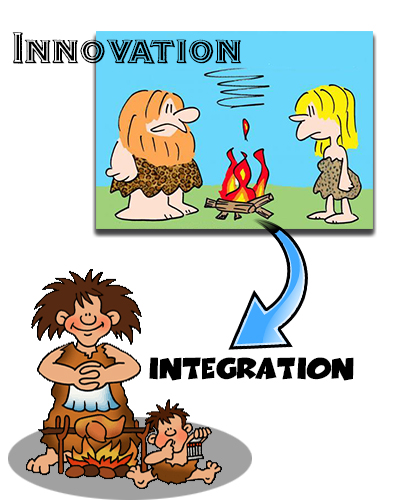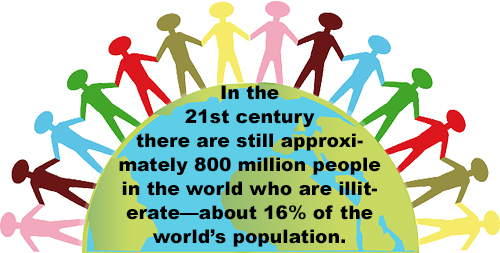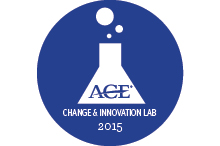 Innovation and integration may be the organizational trend of the day, but just as Rome wasn’t built in a day, neither is innovation, and integrating innovation into organizations is even more of a challenge.
Innovation and integration may be the organizational trend of the day, but just as Rome wasn’t built in a day, neither is innovation, and integrating innovation into organizations is even more of a challenge.
Innovation and integration are challenging activities. If they were easy to accomplish, there would be a lot more of it, it would be commonplace, and we would be living in a completely different world. But the reality is innovation—whether technological, social, economic, political, legal, scientific, or medical—does not happen on cue, so to speak, and more often than not, it happens by accident.
The eventual invention of the telephone, the discovery of plastics, and the creation of Viagara are but three examples of a long list of accidental innovations, which includes: microwave ovens, the Slinky, Play-Doh, Super Glue, Teflon, the Pacemaker, Velcro, X-Rays, chocolate chip cookies, potato chips, Post-It Notes, Corn Flakes, and Penicillin. The discovery of galaxies outside our own Milky Way by astronomer Edwin Hubble in the late 1920s—the scientific realization that changed our world view—is also an example of an accidental discovery—five hundred years after Galileo developed the telescope.
On the other side of the “innovation” coin is when an innovation is ignored. A classic example is the invention of the digital camera at Kodak. It was summarily dismissed by company executives because they perceived camera “film” was their core product. Too late did they recognize their blunder. In January 2012 it declared chapter 11 bankruptcy protection.
Innovation is defined as: “the action or process of innovating.” Synonyms for innovation include: change, alteration, revolution, upheaval, transformation, metamorphosis, break-through.
Integration is defined as: an act or instance of combining into an integral whole; or an act or instance of integrating an organization, place of business, school, etc.
It can be said with a high degree of certainty that technological innovations we take for granted are manifold and have, in turn, influenced the shape and customs of cultures. According to Ryan Allis, a technology entrepreneur and investor who has been part of iContact, Connect and Hive. (source: http://startupguide.com/about-the-authors/), these include:
| 1. The controlled use of fire (400,000 BCE) 2. Phonetic language (100,000 BCE) 3. Trade and specialization (17,000 BCE) 4. Farming (15,000 BCE) 5. The Ship (4,000BCE) 6. The Wheel (3400 BCE) 7. Money (3000 BCE) 8. Iron (3000 BCE) 9. Written Language (2900 BCE) 10. The Legal System (1780 BCE) 11. The Alphabet (1050 BCE) 12. Steel (650 BCE) 13. Water Power (200 BCE) 14. Paper (105) 15. Movable Type (1040) 16. The Microscope (1592) 17. Electricity (1600) 18. The Telescope (1608) 19. The Engine (1712) 20. The Light Bulb (1800) |
21. The Telegraph (1809) 22. The Electromagnet (1825) 23. Petroleum (1859) 24. The Telephone (1860) 25. The Vacuum Tube (1883) 26. Semiconductors (1896) 27. Penicillin (1896) 28. The Radio (1897) 29. The Electron (1897) 30. Quantum Physics (1900) 31. The Airplane (1903) 32. Television (1926) 33. The Transistor (1947) 34. DNA (1953) 35. The Integrated Circuit (1959) 36. The Internet (1969) 37. Microprocessors (1971) 38. The Mobile Phone (1973) 39. The Smartphone (2007) 40. The Quantum Computer (2011) |
The movable type printing press was successful through Johannes Gutenberg’s work in the 15th century. Moreover, his “invention”—a vast improvement over the Chinese version of 500  years prior—led to a growing list of books, magazines, and newspapers, and the Renaissance, the Reformation, the Industrial and Scientific Revolutions, and the so-called Information Age. These developments, in turn, increased the level of literacy in the world. Yet integration is not complete. Now in the 21st century there are still approximately 800 million people in the world who are illiterate—about 16% of the world’s population; mostly women in parts of Africa, the Middle East, and Southeast Asia. In other words, the spread, adoption, and integration of innovation takes time. Integration of innovations also takes time, not only in societies as a whole, but also in organizations, academic and otherwise.
years prior—led to a growing list of books, magazines, and newspapers, and the Renaissance, the Reformation, the Industrial and Scientific Revolutions, and the so-called Information Age. These developments, in turn, increased the level of literacy in the world. Yet integration is not complete. Now in the 21st century there are still approximately 800 million people in the world who are illiterate—about 16% of the world’s population; mostly women in parts of Africa, the Middle East, and Southeast Asia. In other words, the spread, adoption, and integration of innovation takes time. Integration of innovations also takes time, not only in societies as a whole, but also in organizations, academic and otherwise.
Why? A recent article in the online “CIO Journal” section of the Wall Street Journal (dated June 17, 2015) has the headline “At Innovation Labs, Playing with Technology Is the Easy Part.” In this article the writer points out:
“For many companies with innovation labs, the road from eureka to real product isn’t . . . smooth. Often a lab builds exciting stuff but then is frustrated in bringing it to the broader organization for commercial use. . . .Classic management science dictates that stable, repeatable processes keep companies in business. Innovation, by definition, disturbs equilibrium, threatening what has gone before. . . . “You are causing disruptions to a system that has an immune response to repair those disruptions.”
In other words, how do you get the “. . .[organizational] body not to reject the [new] organ.”
 A seminal work on how the scientific world initially rejects discoveries that challenge the prevailing wisdom is found in the 1962 book The Structure of Scientific Revolutions by Thomas S. Kuhn.
A seminal work on how the scientific world initially rejects discoveries that challenge the prevailing wisdom is found in the 1962 book The Structure of Scientific Revolutions by Thomas S. Kuhn.
This brings me to the world of academia. Putting innovation aside for the moment, integration of innovation is both inevitable and resisted. On the inevitable side of the organizational equation, all academic institutions have already integrated a host of technological innovations, for example: touchtone telephones, teleconferencing, computing, the Internet, e-mail and mobile phones. Without these electronic technologies no academic institution of higher learning, at least, would exist today. As a result, “the invisible affect” is anyone at the bottom of the organization can communicate with anyone at the top of the organization. The role of organizational middle managers as messengers has virtually vanished—a trend that began in the 1980s that has resulted in the flattening of many organizations.
On the other hand, academic institutions are typically organized into groupings, that is, by academic discipline, otherwise known as departments. Yes, these departments are further grouped into larger groupings, such as arts and sciences, or business, or public affairs, but inherently academic organizations are separated into “silos,” to use the prevailing terminology. And what is the level of collaboration and cooperation among these departments? In my experience, very little. Breaking down the imaginary boundaries among departments is a very difficult endeavor.
So, on the one hand, electronic technologies have created a breakdown of hierarchy of sorts and allowed academics to communicate with others on a global scale 24/7. On the other hand, the typical organization of academic disciplines by subject inherently creates internal resistance to change.
If technological innovation is to occur on a broader basis, more colleges and universities need to create what has been initiated at Lehman College in the Bronx, New York.
Lehman College has been selected by the  American Council on Education (ACE) to participate in the Change and Innovation Lab (CIL), a program to help colleges and universities implement significant and sustainable initiatives to increase the number of first-generation and nontraditional students who gain a college degree. Lehman is one of nine institutions that will work during the 18-month CIL project to implement concrete steps on their campuses and identify how some of these practices can be applied broadly at colleges and universities across the country. The project is supported by a $400,000 grant from Lumina Foundation.
American Council on Education (ACE) to participate in the Change and Innovation Lab (CIL), a program to help colleges and universities implement significant and sustainable initiatives to increase the number of first-generation and nontraditional students who gain a college degree. Lehman is one of nine institutions that will work during the 18-month CIL project to implement concrete steps on their campuses and identify how some of these practices can be applied broadly at colleges and universities across the country. The project is supported by a $400,000 grant from Lumina Foundation.
Second, and this is really the difficult part, colleges and universities on the undergraduate level need to re-think how students take courses and earn a degree. Online learning aside, is the organization of academic subjects by department the best way to go, or is it just the way it has been always done, and why change?
In a way, the organizational status quo is the line of least resistance. In another way, take any subject, from anthropology to zoology, from accounting to English, and you should find that no subject is pure in content. For example, accounting is a lot about “debit left, credit right.” But it is not just about numbers. It is about analytical thinking, and communicating conclusions in an efficient and effective way to someone else or a group of someone elses in written and oral forms. In other words, in this one subject, it is not just about crunching numbers, it is also about conceptual thinking, and communicating. You can throw in “ethics” as well, given the history of the accounting business in the last 20-30 years.
 Expectations of short-term results from organized innovation efforts, and integration of these innovations into the organizational structure need to be tempered by the long history of homo sapiens’ technological evolution. The reality is innovation, more often than not, happens by accident and there are always antecedents. And integration of these innovations always takes time, a lot of time.
Expectations of short-term results from organized innovation efforts, and integration of these innovations into the organizational structure need to be tempered by the long history of homo sapiens’ technological evolution. The reality is innovation, more often than not, happens by accident and there are always antecedents. And integration of these innovations always takes time, a lot of time.
Eugene Marlow, Ph.D.
September 7, 2015
© Eugene Marlow 2015

